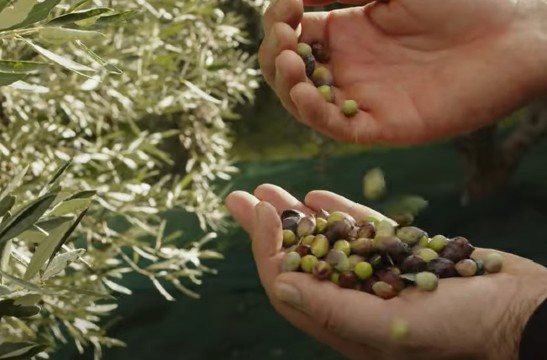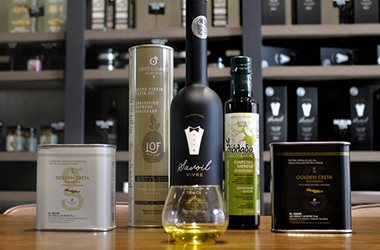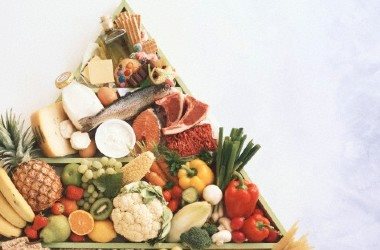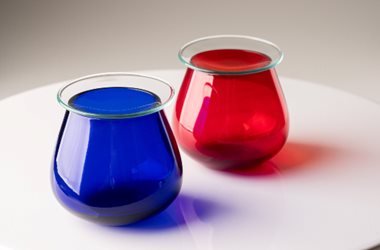Articles
How do I Produce Quality Olive Oil?

Nowadays quality is something much more complex. Olive oils are assessed by
qualified people with specific criteria for taste and
their aroma in a process called organoleptic
control.
Another quality factor that is increasingly being discussed is safety
of Food. For an olive oil to be of high quality it must
is safe and this mainly means that it is free of residues
pesticides from crop protection spraying.
But it also means not being contaminated by dangerous substances, e. g.
by contact of the wrist with plastic harvesting nets; and
of olive oil with plastic storage containers, etc. Finally,
an important quality factor is also durability of Olive Oil.
But what are the factors that affect the quality of olive oil?
Each variety of olive has different characteristics, such as size and shape of fruit, leaf, tree,
so it has its own oil. Most Greek varieties have the specifications to produce olive oil of excellent quality
quality. The quality is also influenced by soil and climate conditions, so we observe that the same variety,
e. g. Koroneiki, gives differentiated oils depending on
the type of soil cultivated or depending on the height and
the distribution of rainfall. Finally, quality is greatly influenced by farming practices.
Better oil is produced when the trees
have a moderate load compared to overloaded trees.
This can be regulated by the producer by pruning.
From a quantitative point of view it is worth waiting for
the full ripening of the fruit and harvest when all the fruit is fully ripe
fruits are black. But when the fruit is harvested after
blackened, the amount of olive oil we take increases
but the quality is degraded because the overripe fruits
the content of some valuable substances is significantly reduced
components. Because, as we mentioned earlier, our aim is to
must be the best possible quality of olive oil, it is preferable to
to pick the fruits when they are yellow
or violet, in which case these components are also found in higher concentrations.
Very important factor affecting the quality of the
product is the right time for harvesting. The climate of the region in some cases limits the
the producer's ability to harvest the fruit at the
In an olive grove, rarely do all the trees have the same fruit load.
For the same reason, it is good not to pile several bags on top of each other
on the back of the agricultural vehicle or waiting at the mill.
The olive fruit must be transported and processed in the mill on the same day as the harvest.
Storing sacks of oilseeds a few days after harvesting to collect them
large quantity and then move on to oiling has disastrous consequences on the
the quality of the olive oil. The operation of the mill has
significant effect on the quality of the oil (e. g. cold pressing gives better oil).
Basic condition for rewarding the farmer's effort
is to have its olive oil bottled with an identity card or collected in a tank with olive oils of the same quality.
In several modern mills there are measuring devices
of oil content in a small sample of fruit
in a matter of minutes. So a farmer could get
a little fruit from the field, measure how much oil it has and in the
then decide when to proceed with the harvest for
to have the perfect combination of quantity and quality of olive oil.
The ideal way of harvesting for quality is by hand but due to the
of high cost practically we can
choose the striping of the trees. The operator of the racking machine
must empty each branch with a
pass and not to circle around the tree again and
again to avoid stepping on the fallen wrist
down, because this leads to a significant deterioration in quality.
In order not to degrade the quality of the fruit it is recommended
the transport in crates because the
fruit is aerated and its quality is better preserved. At
plastic bags, due to the lack of ventilation, the fruit gets hot and deteriorates significantly.
qualified people with specific criteria for taste and
their aroma in a process called organoleptic
control.
Another quality factor that is increasingly being discussed is safety
of Food. For an olive oil to be of high quality it must
is safe and this mainly means that it is free of residues
pesticides from crop protection spraying.
But it also means not being contaminated by dangerous substances, e. g.
by contact of the wrist with plastic harvesting nets; and
of olive oil with plastic storage containers, etc. Finally,
an important quality factor is also durability of Olive Oil.
But what are the factors that affect the quality of olive oil?
Each variety of olive has different characteristics, such as size and shape of fruit, leaf, tree,
so it has its own oil. Most Greek varieties have the specifications to produce olive oil of excellent quality
quality. The quality is also influenced by soil and climate conditions, so we observe that the same variety,
e. g. Koroneiki, gives differentiated oils depending on
the type of soil cultivated or depending on the height and
the distribution of rainfall. Finally, quality is greatly influenced by farming practices.
Better oil is produced when the trees
have a moderate load compared to overloaded trees.
This can be regulated by the producer by pruning.
From a quantitative point of view it is worth waiting for
the full ripening of the fruit and harvest when all the fruit is fully ripe
fruits are black. But when the fruit is harvested after
blackened, the amount of olive oil we take increases
but the quality is degraded because the overripe fruits
the content of some valuable substances is significantly reduced
components. Because, as we mentioned earlier, our aim is to
must be the best possible quality of olive oil, it is preferable to
to pick the fruits when they are yellow
or violet, in which case these components are also found in higher concentrations.
Very important factor affecting the quality of the
product is the right time for harvesting. The climate of the region in some cases limits the
the producer's ability to harvest the fruit at the
In an olive grove, rarely do all the trees have the same fruit load.
For the same reason, it is good not to pile several bags on top of each other
on the back of the agricultural vehicle or waiting at the mill.
The olive fruit must be transported and processed in the mill on the same day as the harvest.
Storing sacks of oilseeds a few days after harvesting to collect them
large quantity and then move on to oiling has disastrous consequences on the
the quality of the olive oil. The operation of the mill has
significant effect on the quality of the oil (e. g. cold pressing gives better oil).
Basic condition for rewarding the farmer's effort
is to have its olive oil bottled with an identity card or collected in a tank with olive oils of the same quality.
In several modern mills there are measuring devices
of oil content in a small sample of fruit
in a matter of minutes. So a farmer could get
a little fruit from the field, measure how much oil it has and in the
then decide when to proceed with the harvest for
to have the perfect combination of quantity and quality of olive oil.
The ideal way of harvesting for quality is by hand but due to the
of high cost practically we can
choose the striping of the trees. The operator of the racking machine
must empty each branch with a
pass and not to circle around the tree again and
again to avoid stepping on the fallen wrist
down, because this leads to a significant deterioration in quality.
In order not to degrade the quality of the fruit it is recommended
the transport in crates because the
fruit is aerated and its quality is better preserved. At
plastic bags, due to the lack of ventilation, the fruit gets hot and deteriorates significantly.




